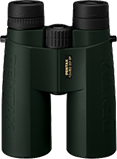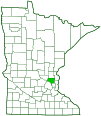Mesophile sunshiner
(Amara lunicollis)
Conservation • Description • Habitat • Ecology • Distribution • Taxonomy
Conservation Status |
|
|||
| IUCN Red List | not listed |
|||
| NatureServe | NNR - Unranked |
|||
| Minnesota | not listed |
|||
Description
Mesophile sunshiner, also called moon-collared harp ground beetle, is a medium-sized seed-eating ground beetle. It occurs in northern Europe, where it is widespread and common, and in southern Canada and northern United States, where it is scattered and uncommon. It is found in forest edges and openings, cultivated fields, meadows, roadsides, and other open areas, especially near water. Adults feed on seeds.
Adults are ¼″ to ⅜″ (7.3 to 9.0 mm) long and elongated oval shaped. They are shiny black with a copper-colored iridescence.
The antennae are reddish-brown, are thread-like, and have 11 segments. They are inserted between the compound eyes and the mandibles. The mouth parts are directed forward.
The exoskeletal plate covering the thorax (pronotum) is broad. The sides are slightly curved. The lateral margins have a narrow, flattened, sharp edge. The rear margin is straight, not wavy. There is a depression near the base at the middle. The exoskeletal plate between the wing bases (scutellum) is visible.
The hardened wing covers (elytra) are long, completely covering the abdomen. Each elytron has 7 longitudinal grooves and no pits (punctures).
The legs are reddish-brown. The fourth segment (tibia) of the front leg has a spur at the tip. The spur is not forked. The last part of each leg (tarsus), corresponding to the foot, has five segments.
Size
Total length: ¼″ to ⅜″ (7.3 to 9.0 mm)
Similar Species
Habitat
Forest edges and openings, cultivated fields, meadows, roadsides, and other open areas
Ecology
Season
Behavior
Life Cycle
Larva Food/Hosts
Adult Food
Seeds
Distribution |
||
|
Sources |
|
| 11/23/2025 | ||
Occurrence |
||
|
||
Taxonomy
Order
Coleoptera (Beetles)
Suborder
Adephaga (Ground and Water Beetles)
Superfamily
Caraboidea (Ground Beetles and Allies)
Family
Carabidae (Ground Beetles)
Subfamily
Pterostichinae
Tribe
Zabrini (Seed-eating Ground Beetles)
Genus
Amara (Sun Beetles)
Subgenus
Amara
Subordinate Taxa
Synonyms
Amara arsenjevi
Amara assimilis
Amara carriana
Amara fatrica
Amara graculoides
Amara inepta
Amara limbata
Amara marquettensis
Amara nigricornis
Amara poeciloides
Amara vulgaris
Amara zaisani
Carabus vulgaris
Common Names
mesophile sunshiner
moon-collared harp ground beetle
moon-collar sun beetle
moon hill ground beetle
Glossary
Elytra
The hardened or leathery forewings of beetles used to protect the fragile hindwings, which are used for flying. Singular: elytron.
Pronotum
The exoskeletal plate on the upper side of the first segment of the thorax of an insect.
Scutellum
The exoskeletal plate covering the rearward (posterior) part of the middle segment of the thorax in some insects. In Coleoptera, Hemiptera, and Homoptera, the dorsal, often triangular plate behind the pronotum and between the bases of the front wings. In Diptera, the exoskeletal plate between the abdomen and the thorax.
Tarsus
On insects, the last two to five subdivisions of the leg, attached to the tibia; the foot. On spiders, the last segment of the leg. Plural: tarsi.
Tibia
The fourth segment of an insect leg, after the femur and before the tarsus (foot). The fifth segment of a spider leg or palp. Plural: tibiae.
Visitor Photos
Share your photo of this insect.
This button not working for you?
Simply email us at info@MinnesotaSeasons.com.
Attach one or more photos and, if you like, a caption.
|
|
|
MinnesotaSeasons.com Photos
|
|

Slideshows

Visitor Videos
Share your video of this insect.
This button not working for you?
Simply email us at info@MinnesotaSeasons.com.
Attach a video, a YouTube link, or a cloud storage link.
Other Videos
Amara lunicollis
jacoleko

Visitor Sightings
Report a sighting of this insect.
This button not working for you?
Simply email us at info@MinnesotaSeasons.com.
Be sure to include a location.
MinnesotaSeasons.com Sightings

